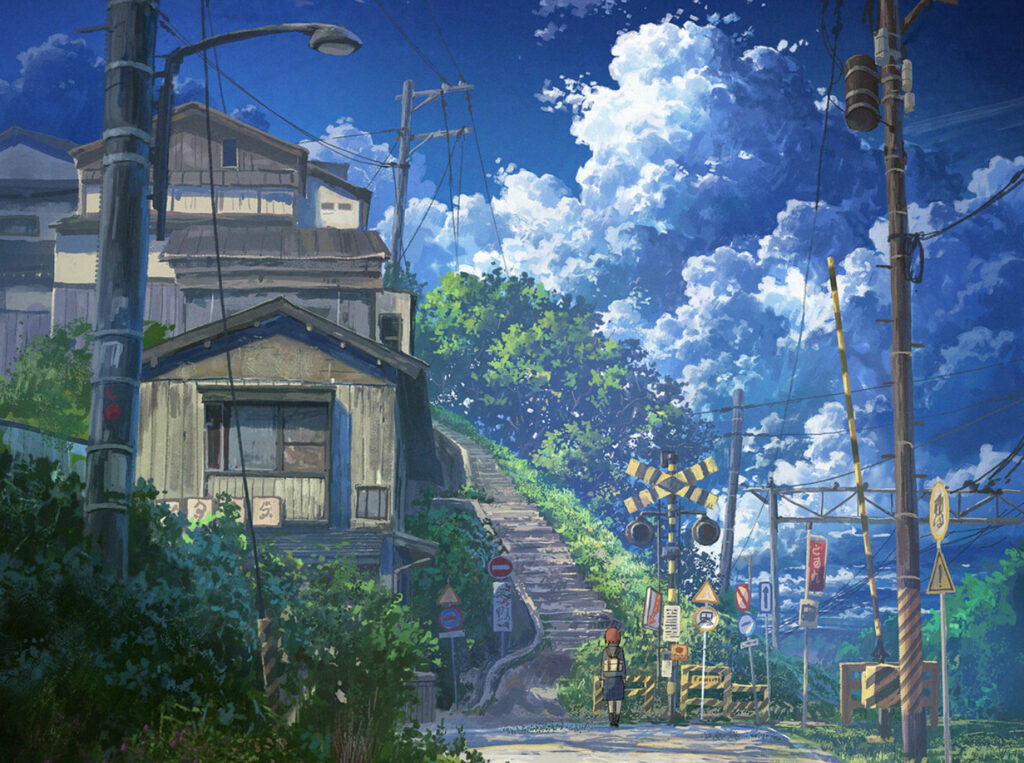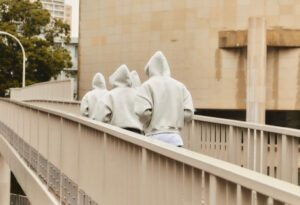Ideological Prevails and Artistic Praxis
In the expanding terrain of digital art, few practitioners embody the ethos of perpetual reinvention as rigorously as Cycle Circle. Operating at the intersection of industrial design, speculative fiction, and the ritual of digital draftsmanship, Cycle Circle is not merely a visual creator—they are a philosopher embedded in the pixelated strata of contemporary culture.
Rooted in a practice developed through contributions to Beijing’s game industry, Cycle Circle distills a cosmology of motifs: cybernetic decay, hyperreal textures, mechanized environments that pulse with mythic undertones. Yet, what truly distinguishes their output is not subject matter alone, but the consistent cadence of labor: studies, tests, failures—all logged, dated, and released with almost archival sincerity.
This editorial unspools their creative method and ideological reach through three prismatic layers: process as ideology, thematic preoccupation, and industrial presence. What emerges is an artist engaged in more than rendering: they articulate a theory of being, a kinetic faith in praxis, and a commitment to materializing the abstract.
Ideology: Rituals of the Digital Forge
Cycle Circle’s artistic output reveals a near-daily discipline of creation. Drawings, compositions, keyframes—some labeled “practice,” others “failed tests”—form a vast corpus that resists the idea of finished work as ultimate destination. In this vision, process becomes product, and repetition becomes doctrine.
There is something almost Zen in this methodology. Each entry—regardless of its polish—functions as a meditation on technical fluency, anatomy, lighting, or motion. The 2021 “Extreme Sports” studies exemplify this: figures captured mid-leap, clad in armored gear, suspended against industrial skylines. These are not simply athletes—they are avatars of velocity. Their bodies appear engineered for movement, their environments sculpted to receive force. It is a visual philosophy that equates momentum with meaning.
But more telling is Cycle Circle’s openness to failure. Posts explicitly titled “failed test” appear without apology, suggesting not carelessness but pedagogy. In an industry obsessed with the illusion of instant genius, such transparency dismantles the myth. Failure, for Cycle Circle, is not an interruption of artistry—it is artistry. It recalls the words of Alberto Giacometti: “The more I fail, the more I become.”
This philosophy elevates the studio into sanctum, and each sketch into liturgy. The dated catalog of work begins to resemble not a portfolio but a manuscript—an illuminated journal of one artist’s evolving consciousness. Here, practice is not preparation. It is the point.
Thematic Preoccupations: Cybernetics, Decay, and Digital Myth
Beneath the surface of Cycle Circle’s studies lie recurring obsessions that stretch far beyond style. One is the marriage of organic and mechanical forms—a kind of techno-organic dialectic that bridges biomechanical aesthetics with speculative worldbuilding.
Figures often appear as augmented humans, their limbs sheathed in exoskeletal armor, their faces hidden beneath visors or metallic lattice. Cities rise in the background, brutalist and electric, landscapes scored by neon veins and worn concrete. This is not utopia, nor dystopia—it is reality enhanced, estranged only by degree. In this world, the line between flesh and machine is neither feared nor fetishized. It is accepted as inevitable.
The environmental storytelling at play is equally precise. Infrastructure and ecology are fused in strange symbiosis: abandoned freight corridors overrun by bioluminescent flora, subterranean railways converted into arenas for sport or combat, urban zones repurposed as sanctuaries for rogue AI. These motifs suggest a world where history is cyclical and entropy is sacred.
Yet beneath the chrome and ruin is a second, subtler thread: the mythological. Especially within works from the “Extreme Sports” cluster, athletes appear not as players but as demigods—locked in ceremonial motion, caught within digital labyrinths of their own making. Their poses evoke heroic statuary; their contexts hint at trials. Each frame becomes a modern mythic panel: Achilles reimagined in Kevlar, Icarus rendered in low-poly wings. The allusion is unmistakable. These are stories of flight, fall, triumph, repeat.
Such dualities—cybernetic and sacred, decayed and divine—constitute the emotional engine of Cycle Circle’s practice. The viewer is not asked to pick a side between technology and humanity, but rather to witness their entwinement.
Industry Integration: The Ghost in the Machine
Though Cycle Circle’s artistic philosophy is personal, it is not insulated. Their output has been shaped within, and also shapes, Beijing’s gaming industry—a cultural sphere where visual artists must fuse creative instinct with production pipelines. Here, their role is not confined to character design or environmental sketching. Instead, they become a mediator between narrative and interactivity.
The influence of cinematic sensibilities is undeniable. In key works from mid-2024, lighting design begins to echo the chiaroscuro of Ridley Scott, while camera angles approximate storyboards meant for kinetic sequences. These compositions are not passive illustrations—they imply gameplay, provoke action. A single image offers spatial logic, emotional weight, and temporal suggestion. It’s visual grammar tuned to immersive systems.
Cycle Circle also engages in the broader educational ethos of the industry—not in formal lectures, but through artistic exposure. By consistently publishing studies labeled “learning” or “test,” they participate in an informal mentorship structure. Younger artists observing their process gain access to the mess, not just the mastery.
Their practice thus becomes parasocial pedagogy—teaching not through curriculum but by repetition, transparency, and example. In doing so, they resist the cult of the flawless render and redirect attention to the forge of artistic labor.
Aesthetic Syntax: Precision Without Rigidity
One of Cycle Circle’s great strengths lies in balancing rigor with intuition. Their anatomical precision is formidable, yet it never calcifies into static poses. Characters lean, stretch, brace, leap—they exist in a world where gravity is real and momentum governs design.
Textures are rendered with startling care: metallic rust is flecked with oil sheen; synthetic cloth is folded with natural entropy; concrete is eroded with memory. But this material fluency serves an emotional purpose. It grounds the surreal in the tactile. It gives the viewer footholds within the speculative.
Color palettes fluctuate from dusky neutrals to saturated neons, depending on emotional intention. In one study, a figure is bathed in emergency-red, their silhouette suggesting a moment of standoff or collapse. In another, a lone tower glows with the blue of false dawn, signaling transition or awakening. These are not aesthetic choices in isolation—they are grammar, mood, lexicon.
The visual syntax crafted by Cycle Circle holds together not just worlds, but worldviews. The work does not just show, it tells, often more truthfully than narrative prose could.
Cultural Context: Beijing and Beyond
Though steeped in speculative futures, Cycle Circle’s work is unmistakably shaped by their cultural environment. Beijing—a metropolis suspended between ancient rhythm and technological acceleration—haunts their work like ambient sound.
Urban scaffolding, weathered signage, and hybrid vehicles populate the margins of many pieces. But these aren’t merely aesthetic insertions. They’re codes, references, and emotional fingerprints of a lived city. The crumbling hyperstructures that appear in their backgrounds speak of cities growing too fast to finish, yet too old to abandon.
This tension—between futurity and ruin—is central to their mythology. It makes their imagined worlds legible. It makes their abstractions intimate.
Cycle Circle, like many of their contemporaries, doesn’t reject globalization. But neither do they erase the local. Instead, their work transmits through a hybridized lens—fragments of folklore refracted through industrial haze, ancestral echoes modulated through digital software.
The Movement
To study Cycle Circle is to encounter an artist in motion—not just across media, but across ideological states. Their work proposes that art is less an act of arrival than a choreography of failures, recalibrations, and temporary harmonies.
Where others polish toward perfection, Cycle Circle publishes the in-process. Where others guard technique as trade, they distribute it as gospel. Where others monetize secrets, they share blueprints of struggle.
Cycle Circle’s legacy will not be a singular masterpiece hung in some digital pantheon. It will be the trace of their passage: the hundreds of dated sketches, the catalog of nearlys and not-yets, the proof that creative labor is not a straight line but a helix.
No comments yet.








